It’s leftovers day! All the little bits and pieces of paint I have left over and saved in little pots and the paint in the bottom of the bottles, it’s all being dumped in one colorful project to use them all up. Let’s see what we can make with the leftovers that aren’t enough to make a project or painting on their own. This painting almost feels like it’s free.

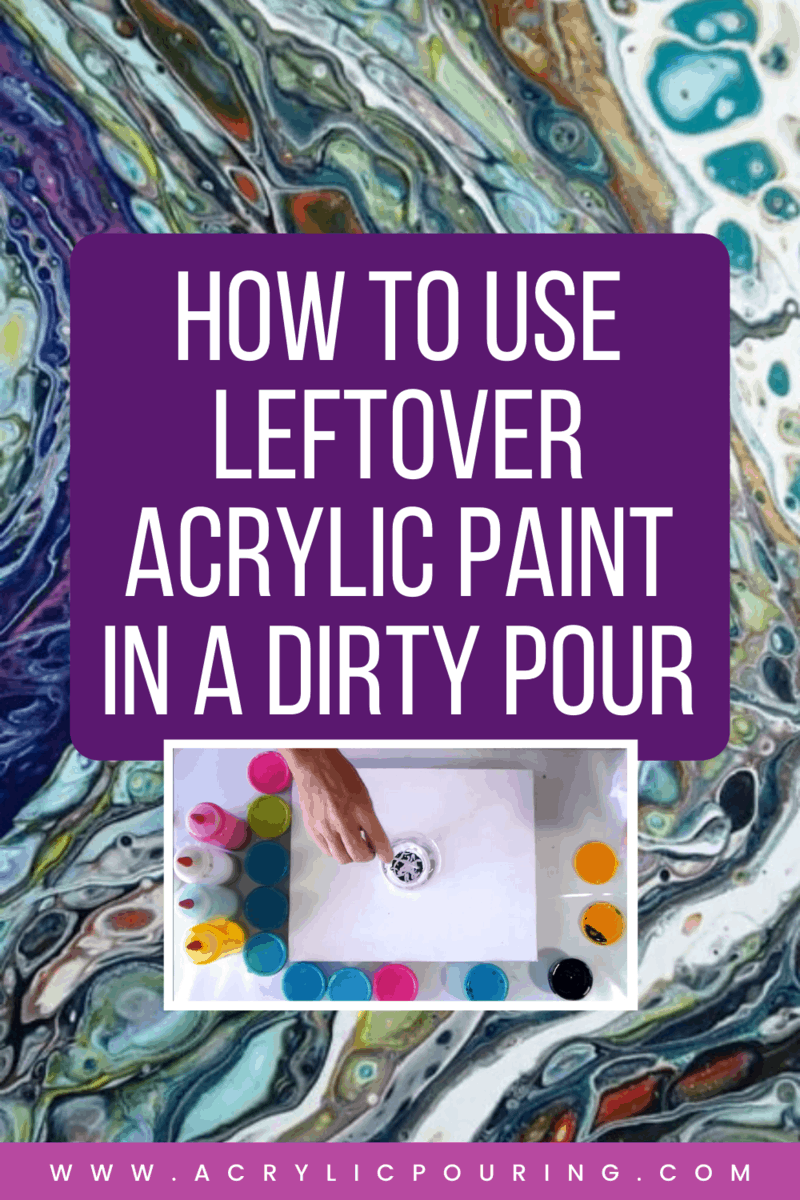
Usually, leftovers day signals a swipe – you can see one I did here using up my leftover paint. But this time I thought I would mix it up a bit, add in a degree of uncertainty and unpredictability by adding all the leftovers into one dirty pour cup. That way, not only do we get all the colors from the leftovers, but we make a lot more colors too, by mixing them all together in a single big dirty pour cup. Anything could happen!
Materials used in this painting:
Art Alternatives acrylics
Blick Student Acrylics
plus random other paints
Floetrol
Treadmill belt silicone oil
Canvas from economy pack
8oz squeeze bottles
4oz cups with lids
Polycrylic gloss protective finish
Recipe for this painting:
All paints were (most likely) mixed approx 2 parts paint, 1 part Floetrol plus water as needed to consistency. A couple of drops of the Treadmill belt silicone oil in each color.
Well I have to say I am very pleasantly surprised how nicely this one turned out. You never know when using up a myriad of random leftovers what exactly will happen when they all mix together, but wow, it’s great! Some metallics, a little sparkle from the iridescent glitter, and a nice range of colors with none that don’t fit well with the others. I encourage you to do something similar. Don’t waste paints. Save up all the little bits and pieces you don’t use in small cups with lids and then one day get them all out and create a leftovers pour. 🙂
As usual, here is a slideshow of photos of this pour, both wet and dry, and close-ups of the details.
After being told in high school that she was so bad at art that she should switch to another subject, Deby didn’t paint again for 35 years. Then a stroke released a new wave of creativity and she began exploring with dot painting, abstract and eventually acrylic pouring, and at last the joy of working with color returned. You don’t need ‘talent’ to be an acrylic pouring artist – just enthusiasm, some basic instruction, and a willingness to try, fail and try again. Paint along with her and learn from her many mistakes, and you’ll soon make great art together.

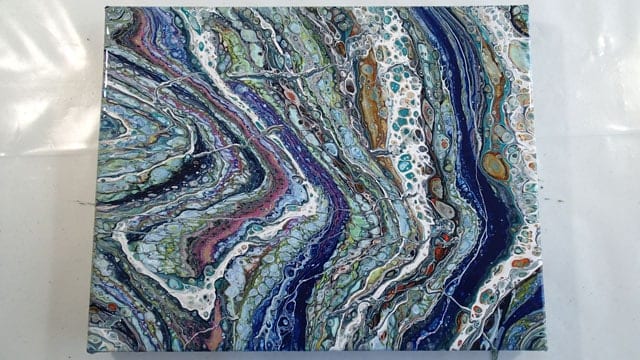
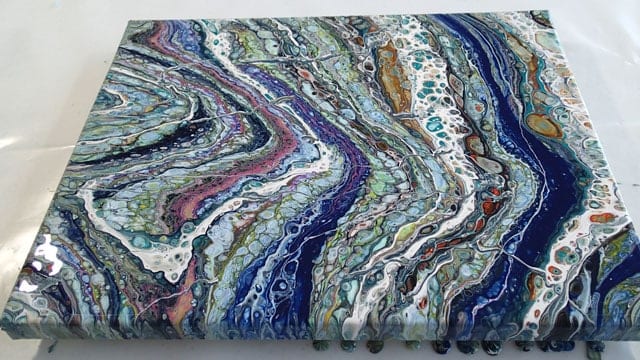
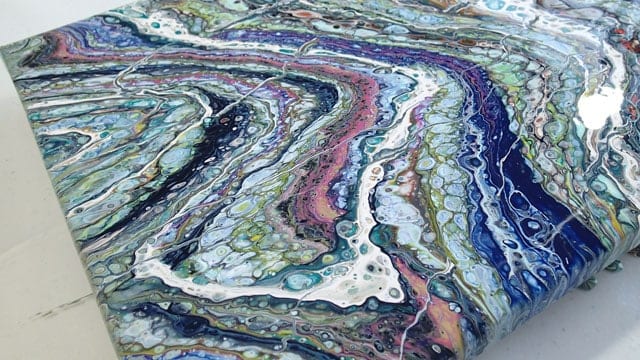
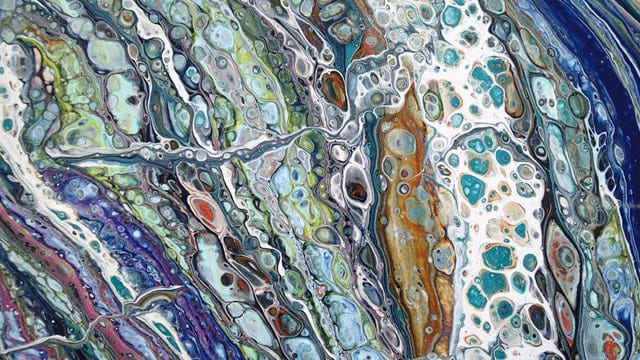
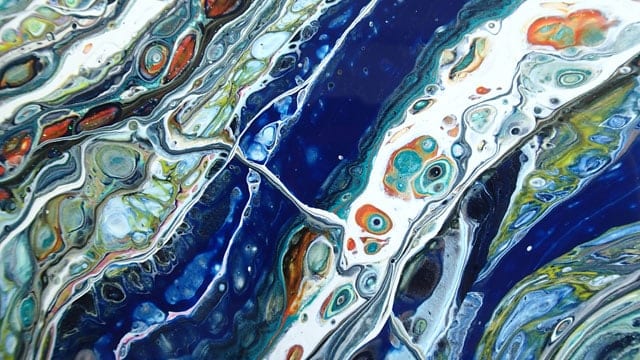
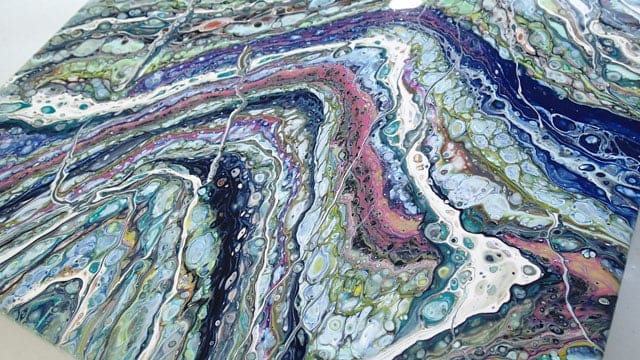
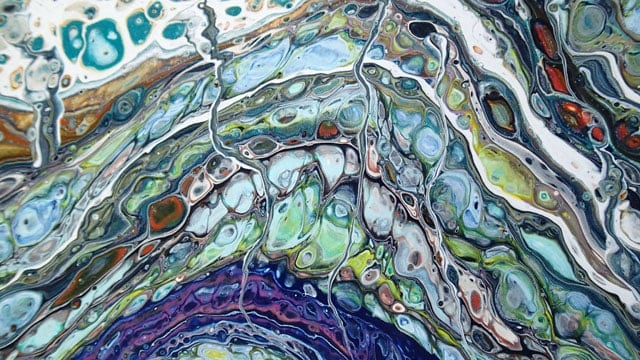
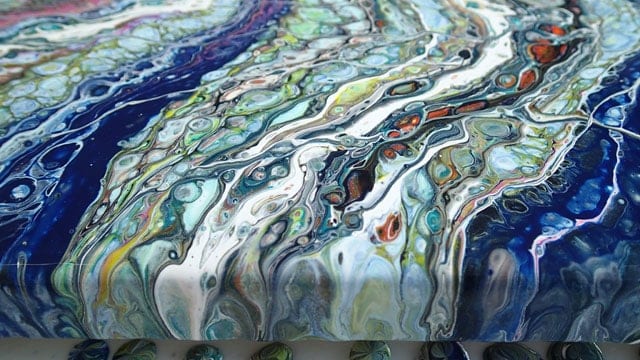
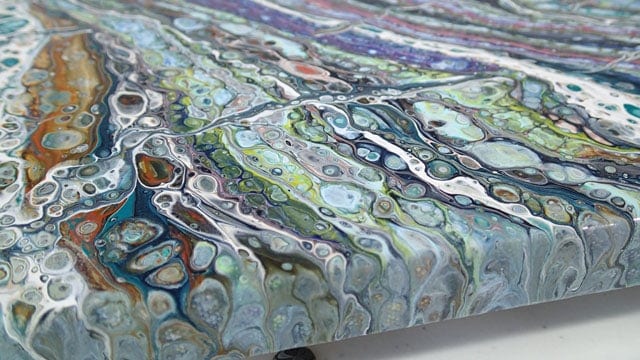
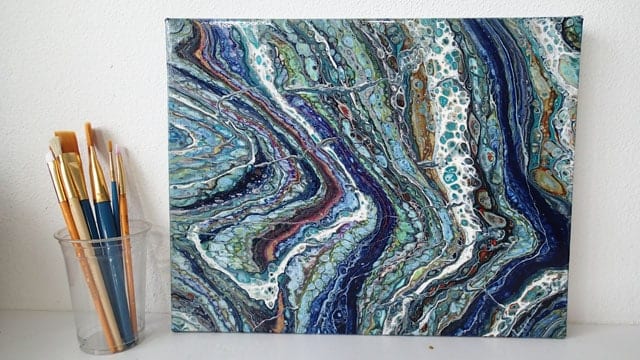
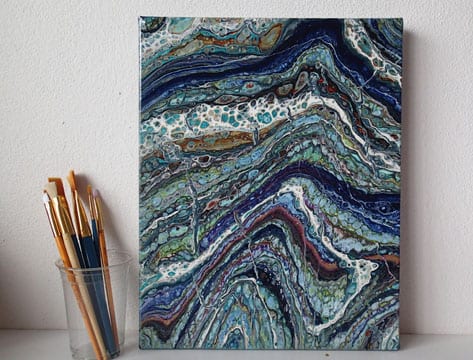
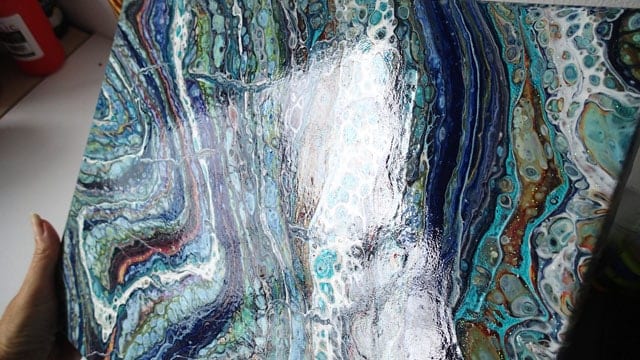
Deby, I love watching your videos. You explain everything beautifully & your pours (99.9%) are spectacular, some more stunning than others of course. You have given lots of ideas. This painting is lovely.
Hope you get to stay in the Camen islands, only visited there for a few hours on a cruise.
Amazing what you can do with leftovers! Beautiful!
What size canvas and what size cup do you usually use?
Thanks for the videos!
This one was a 11 by 14 inch and I think the cup is 10 ounces. I usually just eyeball it rather than mix a particular volume per canvas.
I would like to varnish a pour that I’ve done but I used silicone oil to make the cells, do I need to clean the canvas first and what do you suggest I use to clean it. What could happen if I didn’t clean it?
Thanks for all your help as usual.
Julia
Oh yes clean it for sure, otherwise the varnish will separate and you’ll get blank areas where it doesn’t stick properly. I have a quick step by step here for how I do it – https://kit.com/acrylicpouring/cleaning-and-varnishing-acrylic-paintings
How much do these kinds paintings go for?
I think anywhere from a few dollars to a lot of dollars, depending on size, the reputation of the artist, and the materials used, as well as the location and venue. You can see my Etsy store for the pricing I use for my own art if that is helpful.
I loved the idea and the result you achieved in this painting – I went right to my “studio” and gathered up my leftover paints… what fun! I must admit to splitting up the paints and doing a second one as the first was so successful. Thank you for this great inspiration. I have learned so much from watching your videos. Keep up the great work and good luck with your surgery.
Absolutely beautiful!
I currently design with alcohol inks, but am looking at branching out and am definitely going to try the acrylic pours!
Love your videos!
Another beauty! Thank you for sharing with us. Some of these pours remind me of precious stones, or what you may find in a geode. I love the marbling affect you got with the white in the end of the cup pour!
When reusing your mixed paints, do you add more silicone drops for this “leftover” pour? Thanks for your tips!
No need to add any more silicone. It doesn’t evaporate, so a quick stir is all you need.
Fantastic videos. Great instructions. Thank you for the education! Love acrylic pours and the variety of techniques. Now exploring with resin mica powders and alcohol inks. Any videos you have done on these?
Thank you SO much for your mentoring. K
Here’s a selection of articles on mica powders, not sure if any cover resin and mica specifically. https://acrylicpouring.com/tag/mica-paint-powder/ But be on the look out for alcohol ink, we’re going to start publishing some articles soon and videos eventually. Thank you!